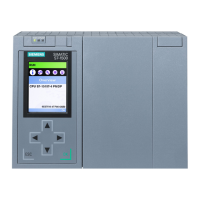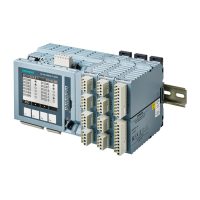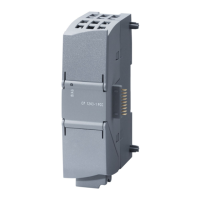Supplementary information
16.12 Link-up and update sequence
CPU 410-5H Process Automation/CPU 410 SMART
System Manual, 10/2013, A5E32631667-AA
257
This upper limit applies only to pure user data. Diagnostics and parameter data are grouped
to form complete data records, and are thus always transferred consistently.
In the general identification format (GIF), you can define a maximum length of consistent
data of 16 words = 32 bytes; 32 bytes for inputs, and 32 bytes for outputs. A greater length is
not possible.
In this context, consider that a CPU 41x operating as DP slave generally has to support its
configuration at an external master (implementation by means of GSD file) using the general
identification format. A CPU 41x operated as DP slave thus supports only a maximum length
of 16 words = 32 bytes in its transfer memory for PROFIBUS DP.
Note
The PROFIBUS DP standar
d defines the upper limits for transmission of consistent user
data. Typical DP standard slaves adhere to this upper limit. Older CPUs (<1999) had CPU
-
specific restrictions in terms of the transmission of consistent user data. The maximum
length of data th
is CPU can consistently read and write to and from a DP standard slave is
specified in your technical specifications, keyword "DP Master
– User data per DP slave".
With this value, newer CPUs exceed the length of data that a DP standard slave provides or
r
eceives.
Upper limits of the length of consistent user data transmitted to an IO Device
The length of consistent user data that you can transmit to an IO device is limited to 1025
bytes (= 1024 bytes user data + 1 byte secondary value). Irrespective of whether you can
transmit more than 1024 bytes to an IO device, the transmission of consistent data is still
limited to 1024 bytes.
When operating in PN-IO mode, the length of data transmission via CP 443-1 is limited to
240 bytes.
Link-up and update sequence
There are two types of link-up and update operation:
● Within a "normal" link-up and update operation, the fault-tolerant system will change over
from solo operation to redundant system state. The two CPUs then process the same
program synchronously.
● When a link up and update operation takes place with master/standby changeover, the
second CPU with modified components can assume control over the process. Either the
hardware configuration or the operating system may have been modified.
In order to return to redundant system state, a "normal" link-up and update operation
must be performed subsequently.
How to start the link-up and update operation?
Initial situation: Solo operation, i.e., only one of the CPUs of a fault-tolerant system
connected via fiber-optic cables is in RUN operating state.
